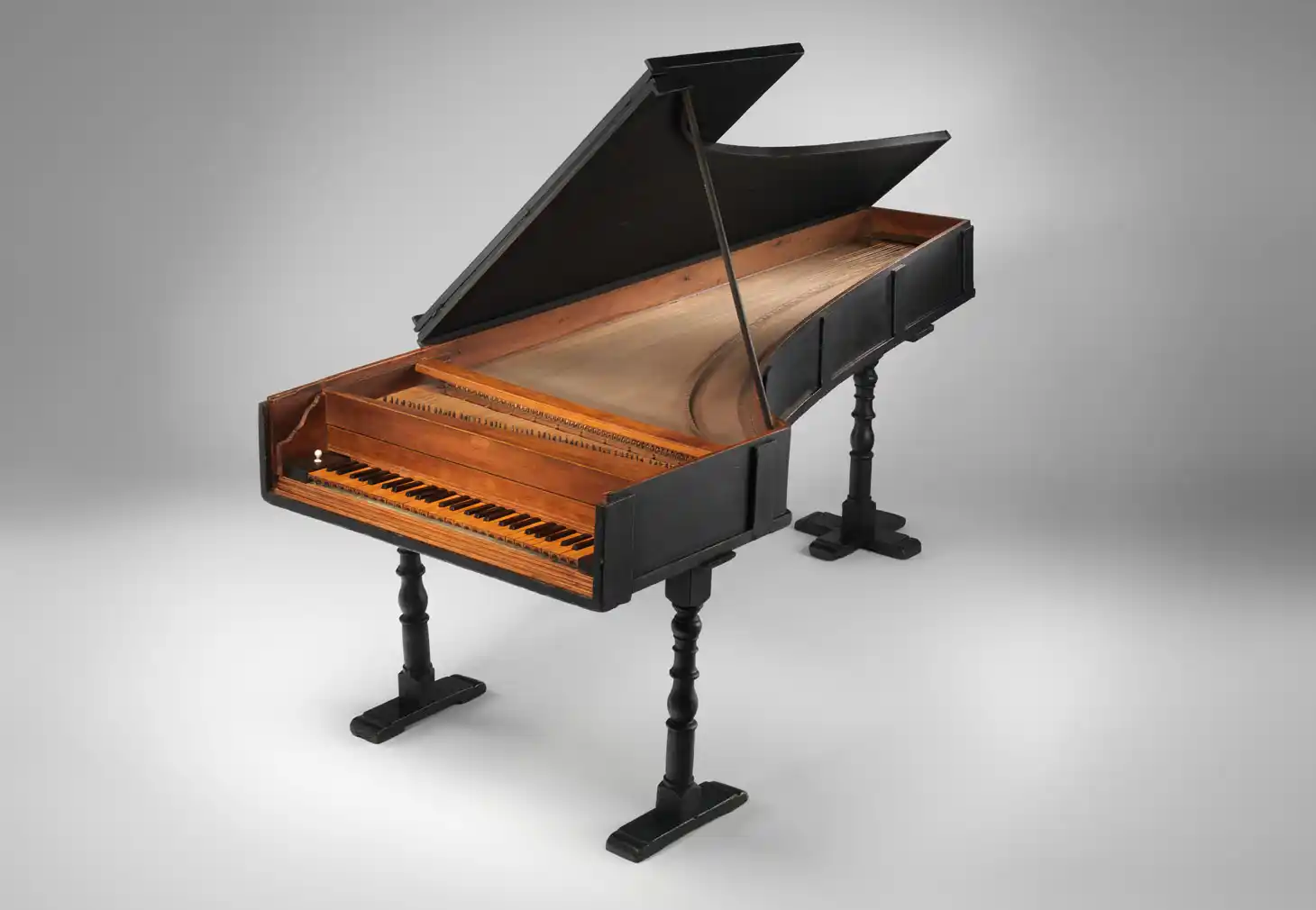Why Are Pianos Black?
The other day I was teaching a piano lesson and my student asked me a very interesting question... she asked me, why are pianos black? This was the first time a student had asked me this question. It actually caught me off guard a bit. But here is the answer:
Pianos are usually black because they are made out of wood that has been painted. They usually paint pianos black because they will look good in most environments and not be too distracting.

A Brief History of the Piano
The piano is a majestic instrument that has a storied history dating back to the early 1700s. It is a sonorous keyboard instrument that produces melodious sound by striking strings with precisely-crafted hammers. Through the centuries, it has become one of the most ubiquitous and versatile instruments in the world, captivating audiences with its enchanting melodies and virtuosic capabilities.

The earliest iteration of the piano was called the clavichord, which was invented in the 14th century by a mysterious figure. This archaic instrument had a delicate and fiddly mechanism, where a player would press on the keys to cause a small blade called a tangent to strike the strings and produce a soft and subtle sound.
It wasn't until Bartolomeo Cristofori, an Italian harpsichord maker, created the first true piano in the early 1700s. Cristofori's piano, or "gravicembalo col piano e forte" (harpsichord with soft and loud) featured a more robust and efficient mechanism known as the hammer action. This allowed for a wider dynamic range and the ability to play louder or softer notes by striking the strings with more or less force.
As the piano evolved, it became a beloved instrument in the homes of the wealthy, where it was used for entertainment and as an educational tool. Pianos were often adorned with ornate and opulent designs, crafted by skilled artisans. By the 19th century, the piano had become a staple in the world of classical music, with virtuosos such as Chopin, Beethoven, and Liszt captivating audiences with their dazzling performances. If you are interested in learning to play the piano so you can perform too, check out our piano lessons in Plymouth-Canton.

The piano also played an important role in the development of other genres of music. It was a crucial instrument in the creation of jazz, with musicians such as Scott Joplin and Duke Ellington revolutionizing the genre with their syncopated and jazzy piano playing. The piano also played a significant part in the creation of blues and rock and roll music, with pianists such as Little Richard and Jerry Lee Lewis leaving a lasting impact on the music scene.
7 Surprising Fun Facts About Pianos
- The longest piano in the world is over 60 feet long and is located in the Guinness World Records Museum in Hollywood, California.
This enormous piano is not only a sight to behold, but it also plays music. It was built by a group of piano builders and technicians who wanted to create something unique and memorable. The piano is made of a combination of wood, metal and other materials, and it took over a year to build. Visitors to the museum can see the piano and even play it if they wish.
- The first piano was invented by Bartolomeo Cristofori in Florence, Italy in the early 1700s.
Cristofori is considered the father of the modern piano and his invention revolutionized the world of music. Before the piano, musicians had to rely on instruments that could only play one dynamic, such as the harpsichord. Cristofori's invention allowed for a greater range of expression and dynamic control. It was an instant success and quickly became the most popular instrument in European courts and homes.
- The piano was originally called the "pianoforte" because it could play both loud (forte) and soft (piano) notes.
This name was coined by Cristofori and it was a fitting description of the instrument's capabilities. The pianoforte allowed musicians to play with a greater range of expression than ever before. It could play soft, gentle notes as well as loud, powerful ones. This versatility made it an instant hit with composers and performers alike.
- The largest piano ever built had 97 keys (compared to the standard 88) and was created by a German piano maker in 1825.
This giant piano was a sight to behold, with its massive size and additional keys. Despite its size, it was still able to produce beautiful music and was a favorite among audiences at the time. The piano maker built it as a one-off and it was never replicated.
- The piano is the most popular instrument for music composition, with more compositions written for piano than any other instrument.
The piano's versatility, range and expressiveness have made it the instrument of choice for many composers over the centuries. From Beethoven and Chopin to Debussy and Gershwin, the piano has been featured in countless compositions. Its popularity continues to this day, with new compositions being written for piano every year.
- The piano is also the most popular instrument for music education, with millions of people learning to play each year.
The piano is a great instrument for learning music as it provides a solid foundation for understanding rhythm, melody, harmony, and other musical concepts. It is also relatively easy to learn to play a few simple songs and with practice, even complex pieces can be mastered. With the help of a piano teacher, anyone can learn to play piano and enjoy the experience.
- The first known use of the word "piano" to describe the instrument we know today was in a letter written by Francesco Mannucci in 1711.
The word "piano" is an abbreviation of "pianoforte" and it was first used in reference to Cristofori's invention. The word piano quickly caught on and became the standard way to refer to the instrument. Today, the piano is known simply as the "piano" in most languages around the world, and the name "pianoforte" is rarely used.
I hope you enjoyed those fun facts about pianos. I also hope you now know why pianos are black. Thank you for reading all the way to the end!



